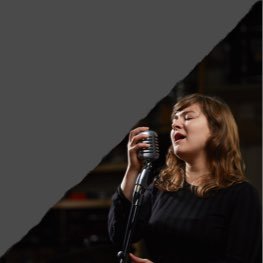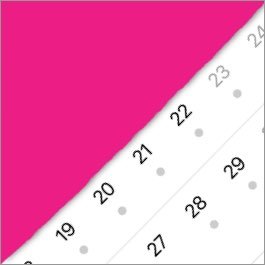IMPROVISING IN A SHUFFLE STYLE
By Paul Trippett – musician, teacher and musical director
Shuffle is a feel or groove normally associated with electric blues and some rock ‘n’ roll, but also has a significant stylistic overlap with the swing feel in jazz. Although ‘shuffle’ is often just a description of the drum groove, the term is also used to describe the uneven placement of subdivisions within a beat, usually written with the same note value. However the term ‘swing’ is much more commonly used in this context.
Swing developed in the 1930s in America. Although there were quite a broad variety of styles among the big bands of the time, blues made up a significant part of their repertoire. In the 1940s (at the peak of the big band era), a branch of swing called jump blues became popular. The bands were smaller and featured horns, and played a lively style that was strongly influenced by boogie-woogie. The blues was a key influence in the early development of jazz, but it continued to develop as a separate, albeit closely related genre. With the increasing use of amplification, the new electric blues sound became popular in the early 40s and proved to be highly influential. The 1950s then saw a number of new styles of blues emerge, known by the cities in which they originated, for example, New Orleans blues, Chicago blues and Detroit blues.
There was a gradual shift from swung to straight quavers in a lot of American popular music after WWII. This was probably due in part to the influence of Cuban music in the development of rhythm and blues in New Orleans in the 40s, and the popularity of mambo in the 50s. Although swing quavers continue to be a defining feature of many jazz and blues styles, most rock is played with straight quavers, as has the majority of popular music since the 1960s. However, variants of the shuffle had a significant influence in the development of funk, notably styles developed by the American groove drummer Bernard Purdie.
In shuffle or swing style, the drum line is vital as it sets the rhythm for all texture and creates the shuffle feel by swinging quavers. In both swing and shuffle drum grooves, the 2nd quaver of every beat is placed later than halfway through. The exact placement varies according to tempo, sub-genre and individual style, but in swing it is typically around 3/5 of the way through the beat. In shuffle the placement of the off beats is much closer to 2/3, with many blues drummers describing it as being the 1st and 3rd triplet. The best way to get to grips with this is to practice with recordings. Using software to slow down recordings can help you to understand the detail of the language used, but if you want to develop a good feel, there’s no substitute for regularly playing along with recordings. Both swing and shuffle also have emphasis on beats 2 and 4. In shuffle this is with heavy accents on the snare, and in swing with the closing hi-hat. The weighting given to the other divisions of the bar is also crucial and varies according to the sub-genre, individual player and song.
Improvising in a shuffle style
A drummer playing a blues shuffle should consider when and how to vary the groove. Fills are a good way to mark the form and commonly make use of triplets, (emphasising the 2/3 placement of the quavers), and usually resolve on beat 1 of the next section with a cymbal crash. Using a different cymbal in a different section is also another good way of marking the form with a change of texture.
The bass is commonly walking a repeating riff that transposes to follow the changes. An alternative is to play mostly root notes in quavers, hooking up with the uneven placement on the drums. Guitarists commonly use distortion when playing electric blues and using pedals to achieve this is a good idea. This is because you’ll be able to maintain your own sound fairly reliably when using different amps. Instrumental solos should use appropriate blues and rock language, whilst taking care to hook up with the swing when playing quaver lines. When comping, guitarists often play down strokes on the beat and up strokes to play the off beats, with extra weight given to chords on beats 2 and 4. If there is piano as well (or a second guitar), then it’s common for one to take the primary comping role and the other to do fills that support the melody or soloist.
Influential artists
T-Bone Walker was the first artist to popularize the new electric blues sound in the 40s, with his 1942 record ‘Mean Old World’. As amplification started to catch on in the 40s, the nuances of the guitar style could be more easily heard in less intimate settings and in time, over a more involved drumming style. Louis Jordan and His Tympany 5 were one of the most popular jump blues acts of the 40s and the driving style was a precursor to rhythm and blues.
Howlin’ Wolf’s 1951 record ‘How Many More Years’ features one of the first recorded uses of distortion on guitar. As rock‘n’roll developed in the 50s, swing quavers were still common in tunes such as ‘Rock Around The Clock’ by Bill Haley & His Comets’, although a much straighter feel can be heard in ‘Great Balls of Fire’ by Jerry Lee Lewis and ‘Johnny B. Goode’ by Chuck Berry. On the other hand, the shuffle was still very much part of the language of jazz and blues.
Later variants of the shuffle groove were extremely influential in the development of funk. Bernard Purdie is said to have played on over 4000 albums in his career and he is known for his development of the half time shuffle, which he called the ‘Purdie shuffle’. The backbeat (2 and 4 in a regular shuffle) happens half as often, only on beat 3, whilst maintaining the triplet subdivision. The Purdie shuffle has polyrhythmic layers to it, which can bring out different elements of the groove in a composition.

The Purdie shuffle can be heard by the man himself on the 1980 song ‘Babylon Sisters’ by Steely Dan, and a variation of it (played by Jeff Pocaro) can be heard on Toto’s 1982 hit ‘Rosanna’.
Shuffle Spotify playlist
We've pulled together a playlist of shuffle songs that appear on our Rock & Pop 2018 syllabus as well as other great songs with a shuffle feel for further inspiration and ideas. Follow our Spotify profile and playlists to easily find the playlists whenever you want to have a listen.
About Paul Trippet
Paul Trippet is a professional bassist and double bassist who studied music at the Royal Academy and University of Edinburgh. He is a teacher, an ensemble and big band director, and a leader of improvisation and song writing workshops. Paul is an active member of the UK jazz scene and has also toured the world with big bands and shows, including The Glen Miller Tribute Orchestra, The Memphis Belle Swing Orchestra, and The Kings of Swing.









